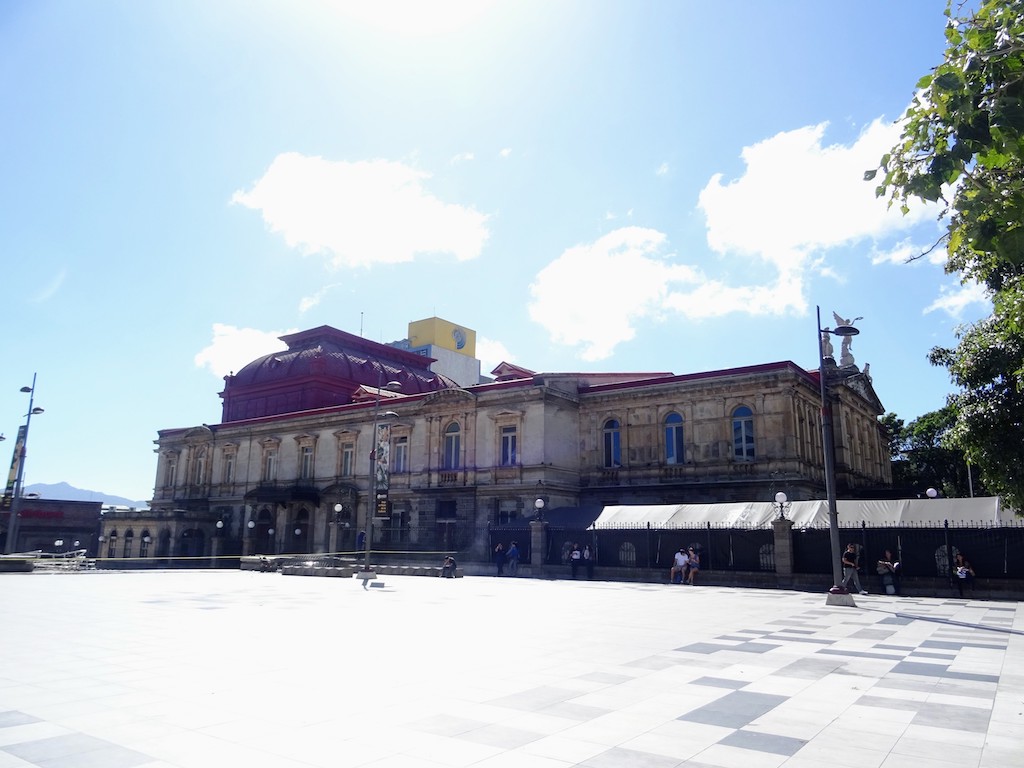

First one of our first visits in San Jose, we decided to visit the National Theater of San Jose. It was as well a piece of advice from our guide during our free tour of San Jose.
We arrived just after the opening hour and bought our tickets. They propose guided tours in English and Spanish. So we book for the first available visit, which gives us time to wander around and have a coffee. The day is off to a good start!
We’re back for the visit. There are not too many people so our small group of 5 can start the tour.
The history of the National theatre of San Jose
During the second half of the 19th century, Costa Rica wanted to strengthen its position as a liberal country. The country then launches a programme where culture, education and health are the major issues. It was with this in mind that the construction of the national public theatre was decided and which will be devoted to the arts and will contribute to the social enrichment of Costa Ricans.
It was built between 1891 and 1897, and became the pride and cultural symbol of the country.
Funding for the theatre was made possible by the creation of an export tax on coffee, then the main exported product, by President Jose Joaquin Rodroguez Zeledon. No other export products were taxed at that time. It will come later…
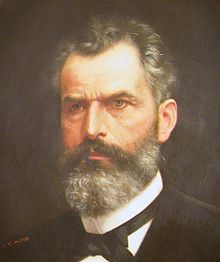

It also appears that, returning from their business trips, coffee producers were eager to have a cultural place as beautiful and majestic as those they frequented in Europe. For this reason, they imported most of the building materials, supplies and ornaments from Europe. The architect even went so far as to create a royal lodge, when the country had never had a king. The president will take advantage of that.
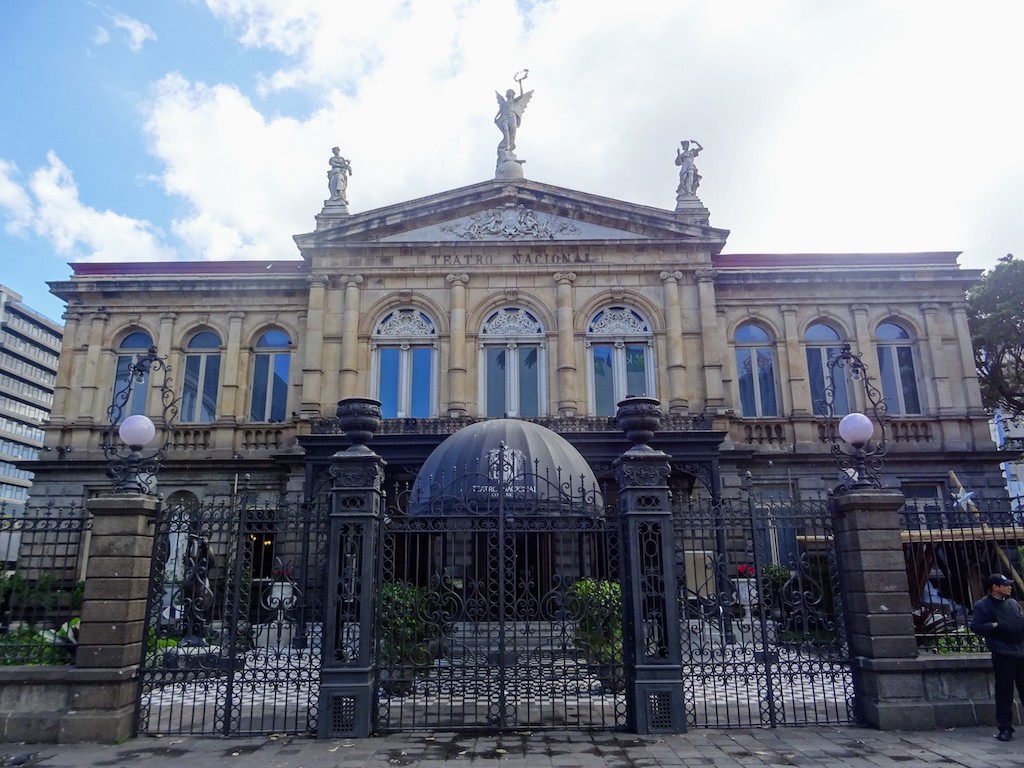

Upon her arrival, our guide tells us about the different styles of the theatre. As we can see, we travel through Europe. It’s as if they couldn’t make up their minds, that everything they were offered was so beautiful that they took a little bit of everything to make sure they didn’t miss anything! The result is fabulous.
The façade
First of all the façade is in German neo-classical style.
The first vestibule and its four muses
The first vestibule is decorated in a classical Pompeian style with its Italian marble floor, and to access the 2nd vestibule in Spanish Baroque style, we will pass through a Glass door in French style! That’s all it is. I confess that I discover the style of French glass doors. But as our guide looks at us for our approval, we nod with confidence. I don’t want to disappoint her by admitting that I’m not very good at architecture!
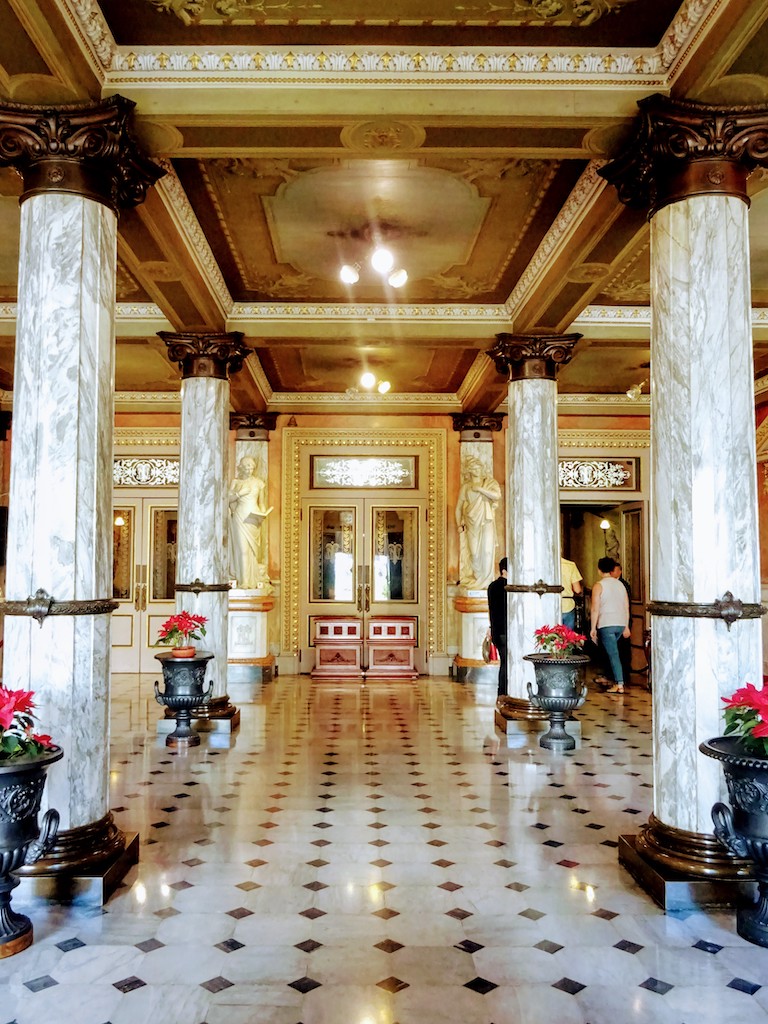

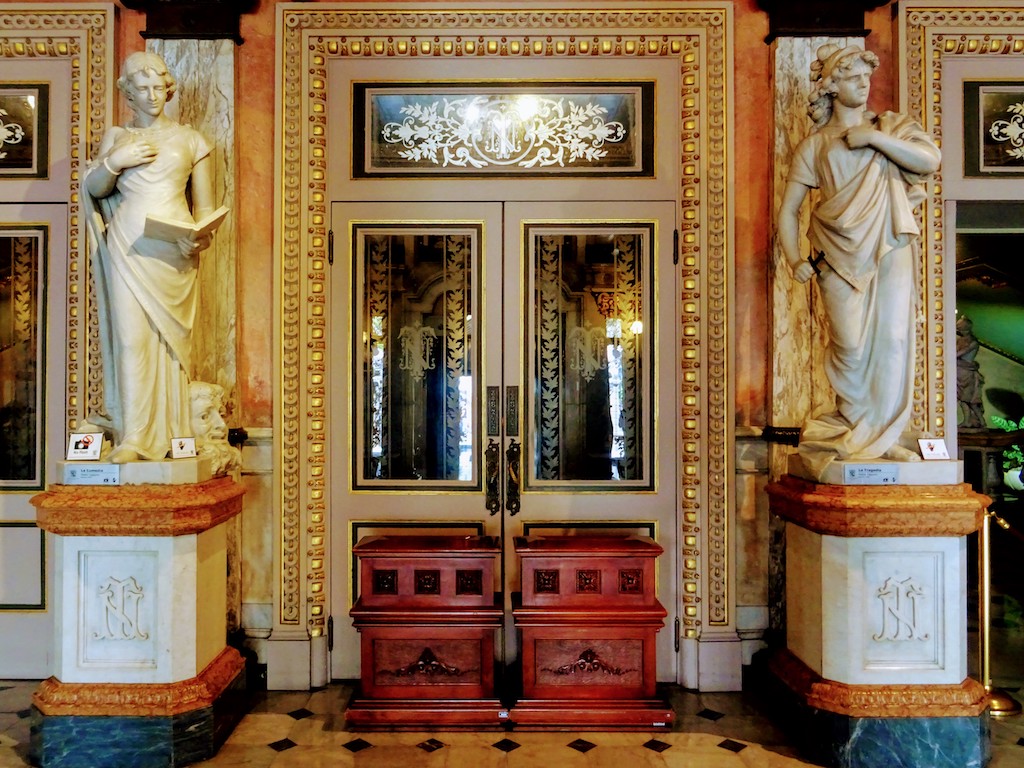

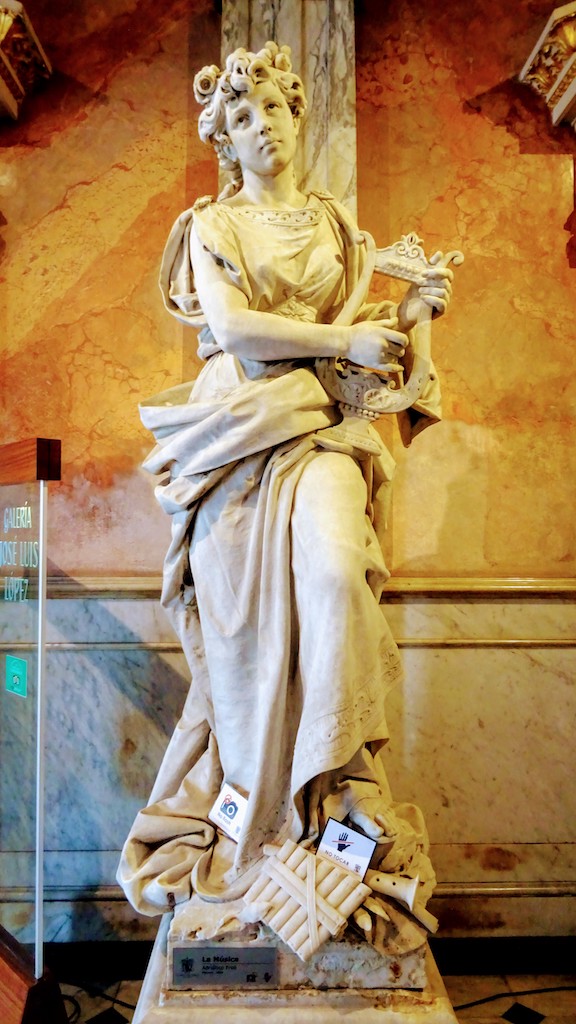



The second vestibule
So we walk through the door, and we find ourselves in the second vestibule at the foot of the stairs leading to the lobby.
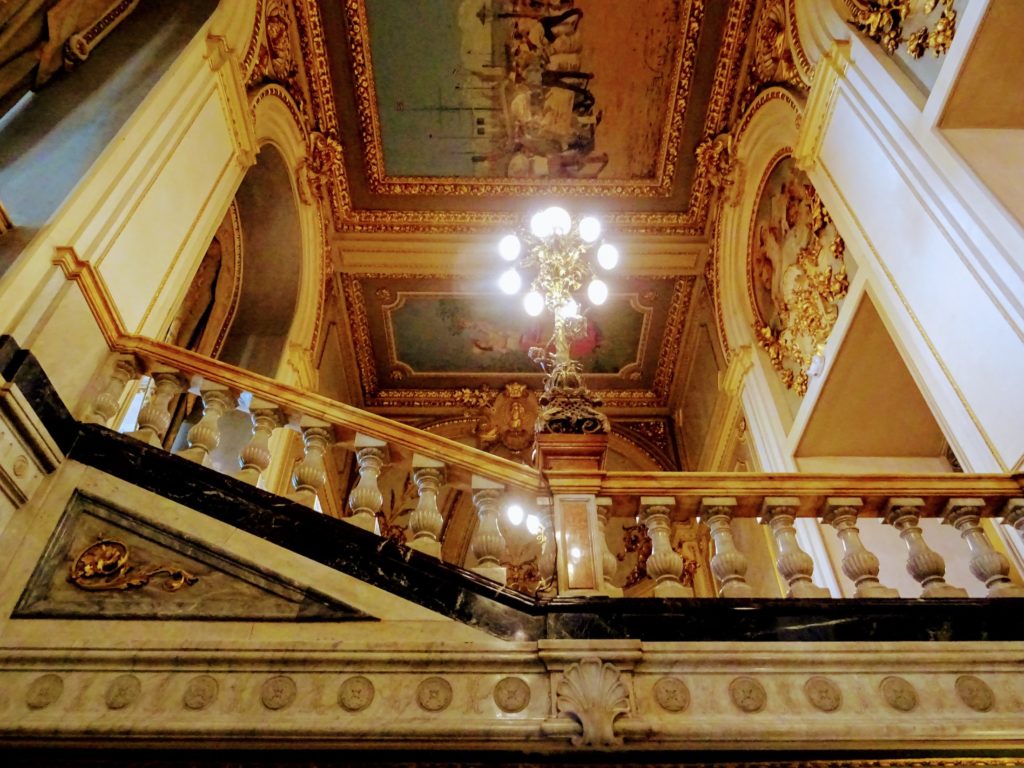

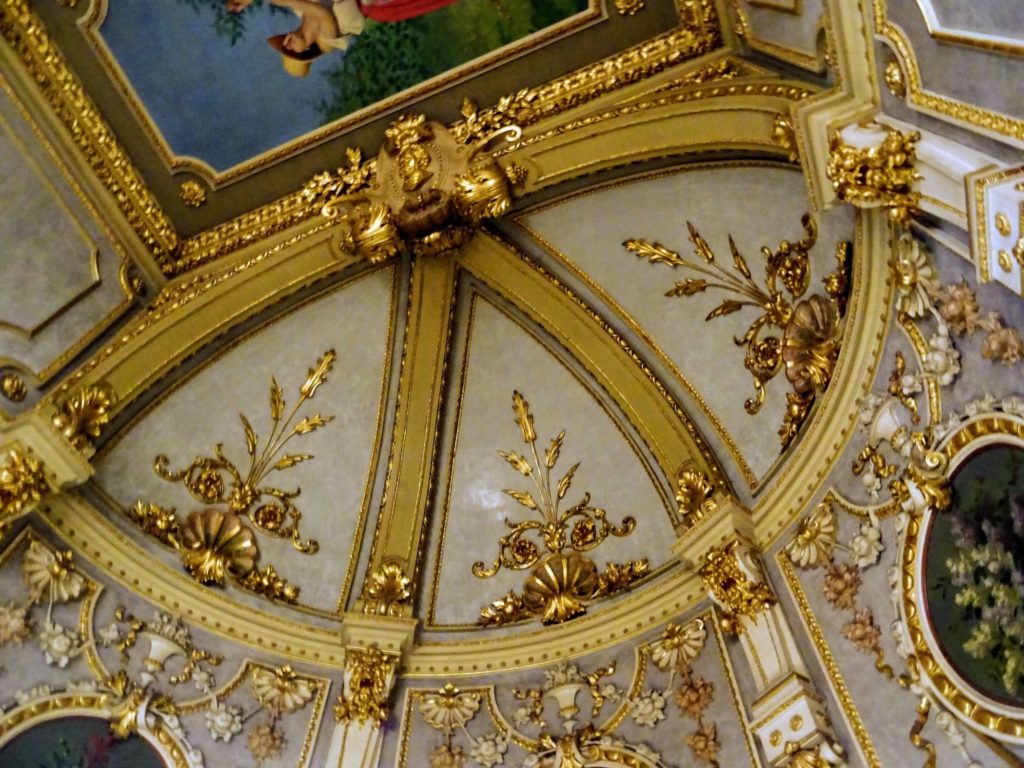

Multi-coloured marble railings and gold leaves enhance the beauty of wall decorations.
“Allegory of Coffee and Bananas”
And on the ceiling, the famous fresco, “Allegory of Coffee and Bananas” painted by the Milanese artist Aleardo Villa.
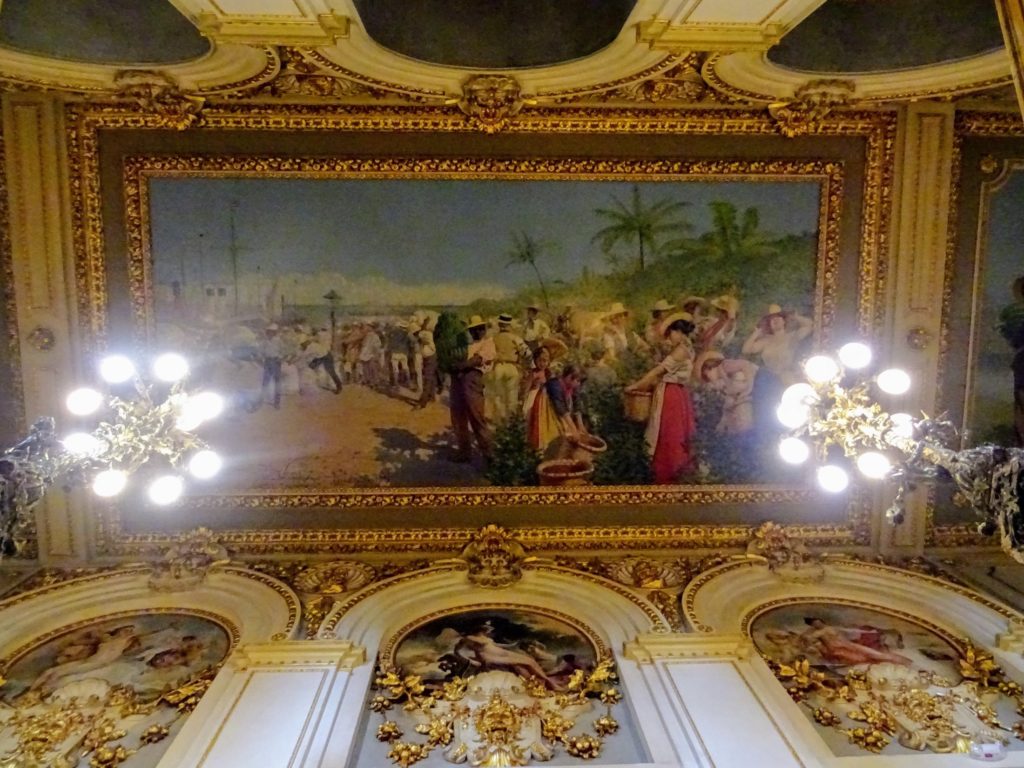

This well-known fresco is dedicated to the workers in the coffee plantations without whom the construction of this magnificent theatre could not have taken place. It would have made many Costa Ricans smile due to 2 mistakes made on the painting. There are no coffee plantations by the sea, they are in the mountains, and the man who carries the bananas holds them upside down. Carried this way, bananas fall under their weight!
In 1971, this fresco was printed on the banknote of 5 colons for years before it was removed from circulation in favour of a coin.
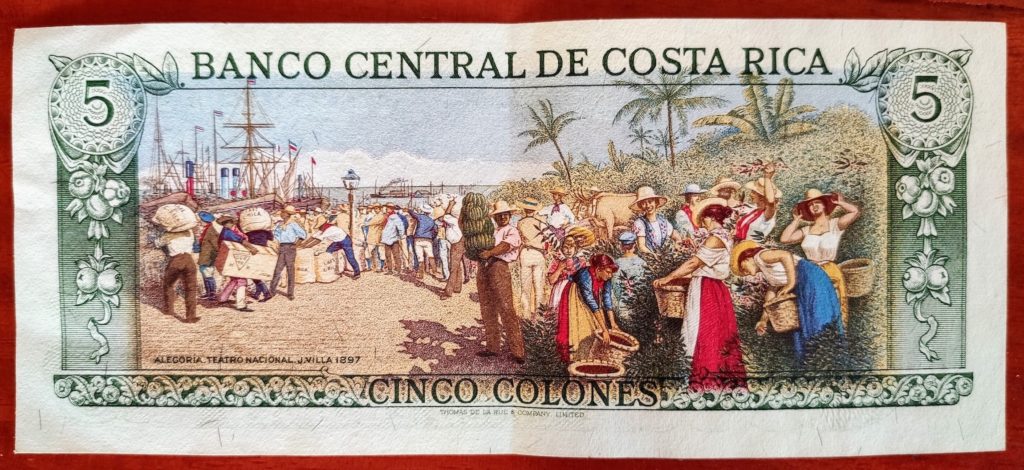

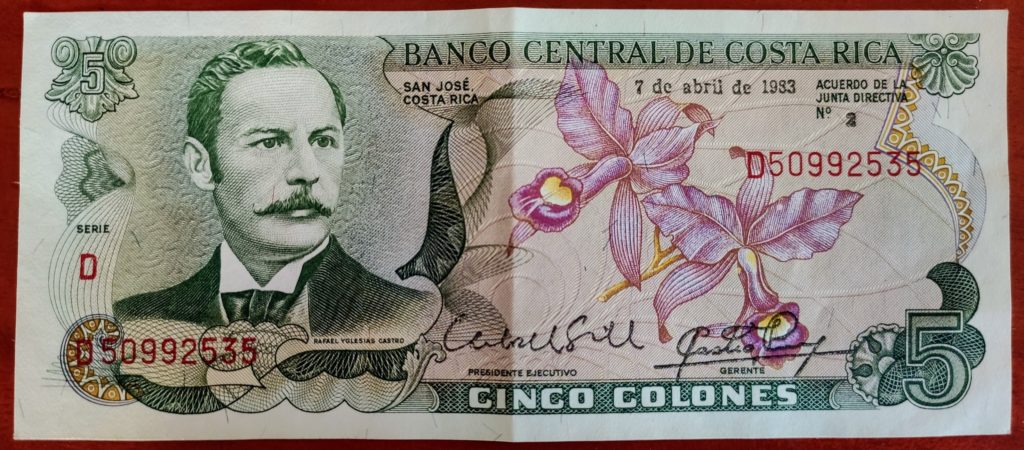

While our guide explains the mural, a funny-dressed guy joins our group and starts talking to us. He introduce himself as the Italian architect Ruy Cristobal Molinari. Everybody goes quiet. We all look at him and wonder what’s going on. Our guide takes over and reintroduce our new host, and we finally understand that he is a second guide in period dress that will accompany us. And so we leave a traditional visit to go back to the past to exchange with this architect about the theater, its function and its peculiarities. Amazing!
The auditorium
Ruy Cristobal takes us into the auditorium.
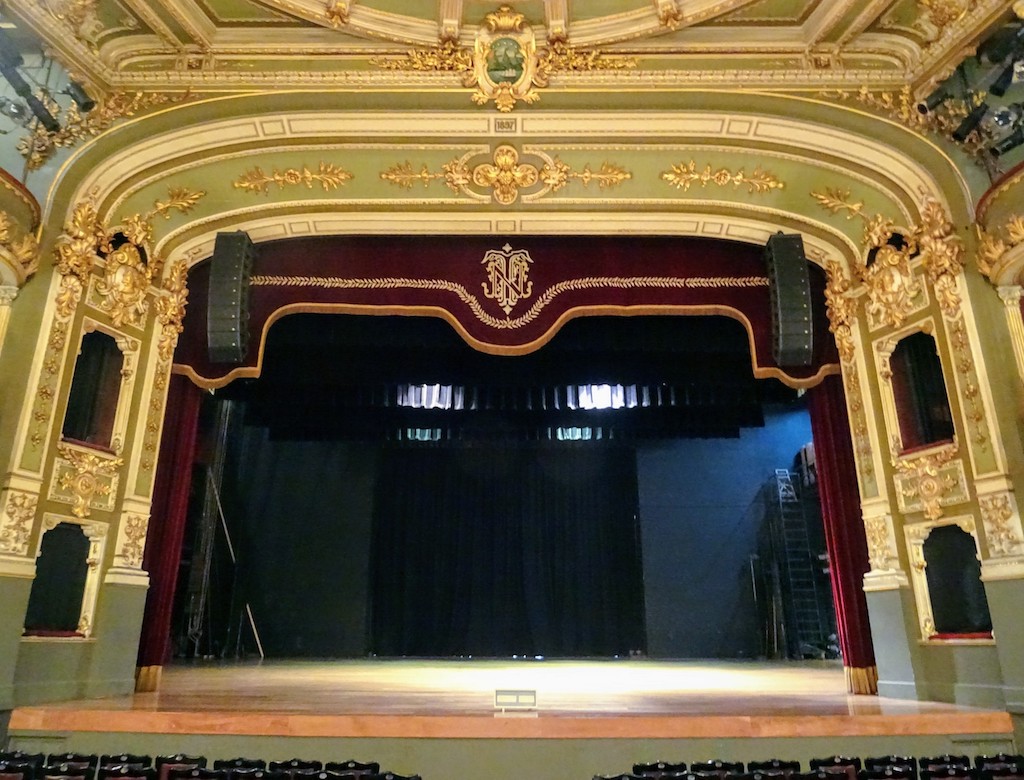

The stage
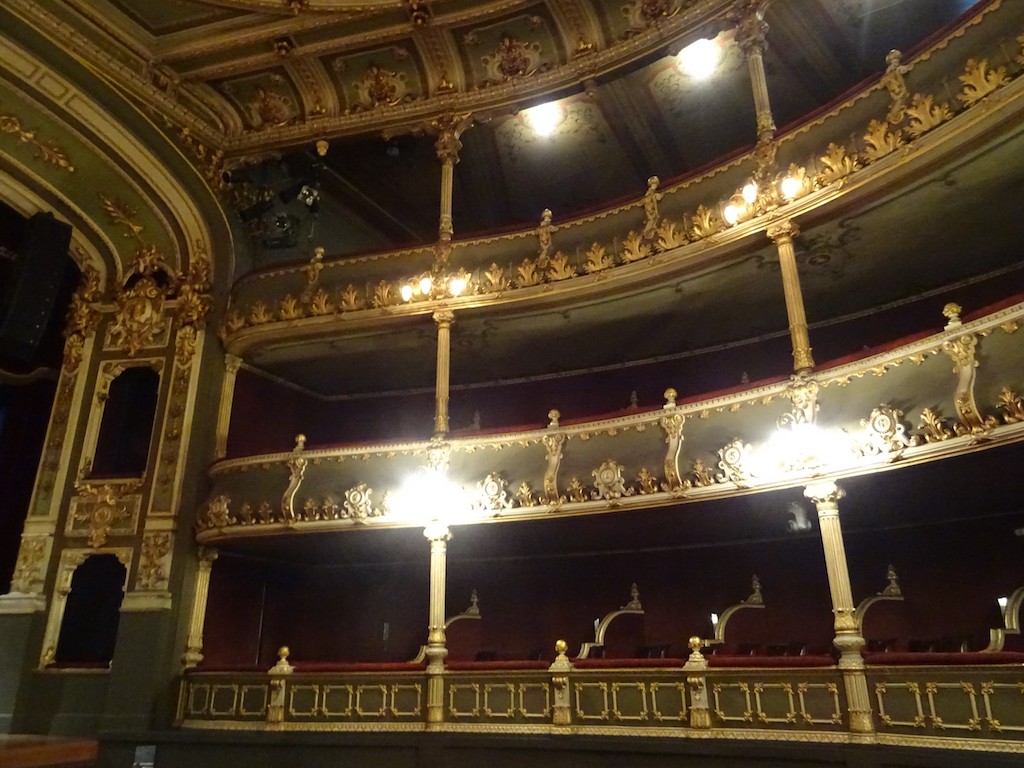

In the European style of operas, shaped as a horseshoe, it could accommodate 670 spectators. The orchestra seats were imported from New York, because unfortunately those from Europe never arrived.
The first 2 floors are made up of boxes reserved for the rich, and there is the gallery on the 3rd floor for the people.
Fun fact: there’s a better view from the gallery than from the boxes. Indeed, the floor in the boxes is flat, so the front row actually has a great view of the stage, while the 3 rows behind can’t see anything. In the gallery, the seats are on a sloping floor which allows everyone to enjoy the show. But theatre was also a way of showing itself and asserting its position. So maybe some people had not much interest in what was happening on stage…


The stage
You can see that there is no pit under the stage. The production of operas was therefore limited, or with a small orchestra that had to be able to fit on stage.
Another interesting feature of this theatre is that the floor of the room can be raised to the level of the stage thanks to a manual mechanism located under it. The theatre then became a large hall with a grandiose environment in which balls and large receptions were held. Today, this space is only used for ceremonies scheduled during a presidential election, in honor of the new president.
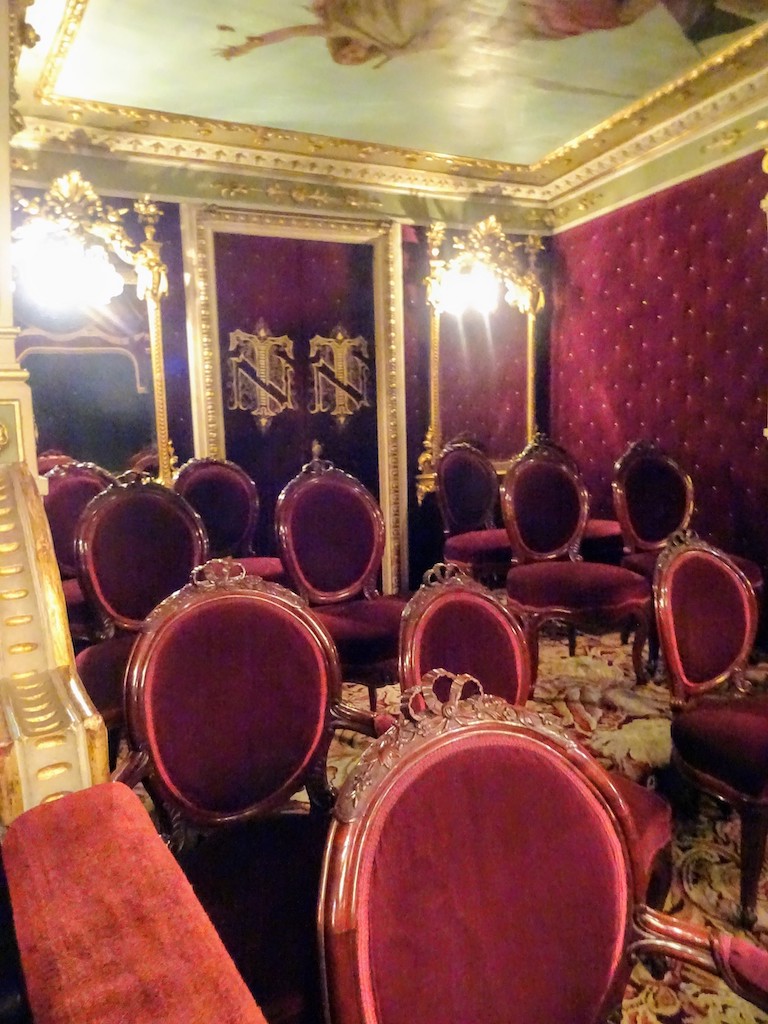

The presidential box on the first floor
On either side of the stage are lodges hidden by curtains. They were reserved for widows who could not show up in public or famous people who did not want to be seen. Incongruously, the lodges face the room. There’s no way to see the show without sticking your head out. 🤔
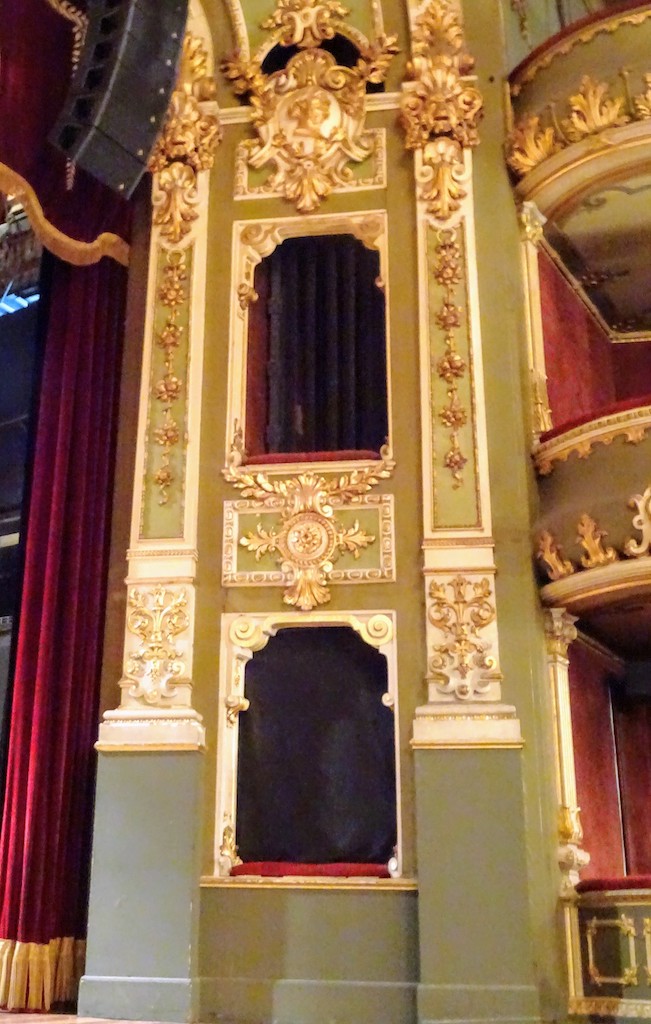

The lodges, hidden behind curtains
The lobby
We take the stairs to the lobby. And…the President Rafael Yglesias Castrohere welcome us, which is a great surprise!
We continue the tour with him. He explains that the rococo-style lobby was the place where spectators socialised during intermissions. We discover the Confidents, round sofas in the Louis XVI French style. Which we recognise at first glance of course 😉 The seat of these sofas is wide, which allowed women dressed in their hoop dresses to sit.
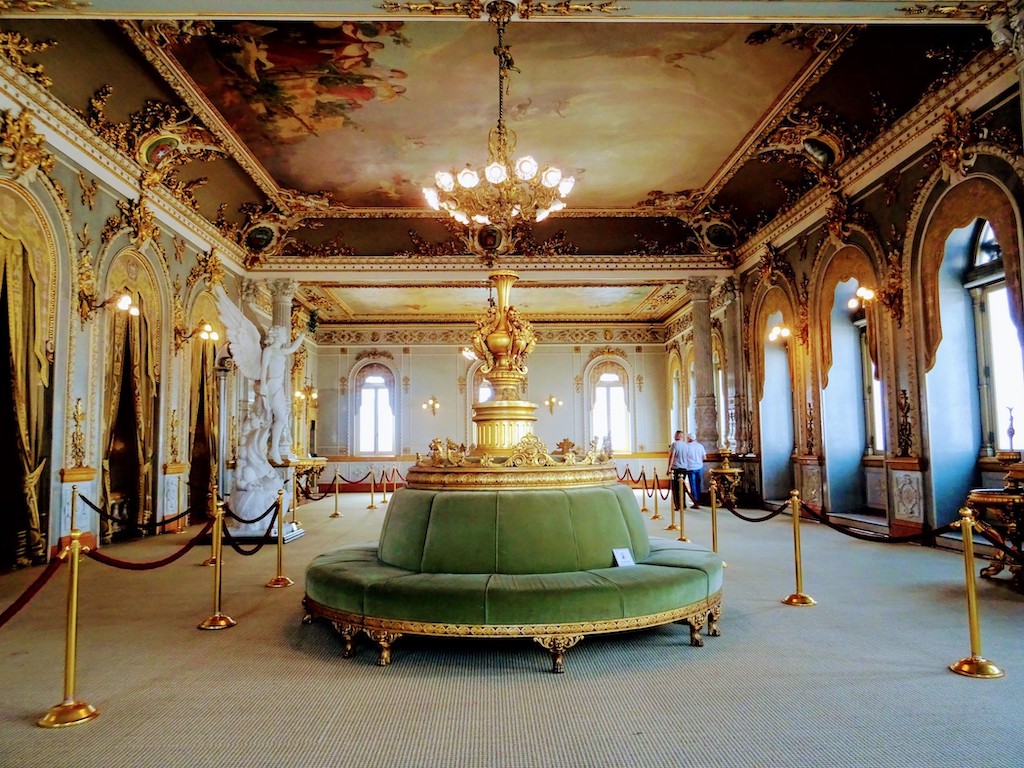



At each end, there are two smoking rooms. One for men, and one for women. Surprising, but pleasant! In the man smoking room, we see the portraits of the two presidents who participated in the construction of the theater. And our guide to add, a portrait of me when I was blond. It’s true that the president with whom we are is much brown!
We admire the floor made with 20 species of Costa Rican woods, “The Champagne Fountain”, a must, and the paintings on the ceiling, which were for Costa Ricans their “ceiling of the Sistine Chapel”! I admit the paintings are beautiful.
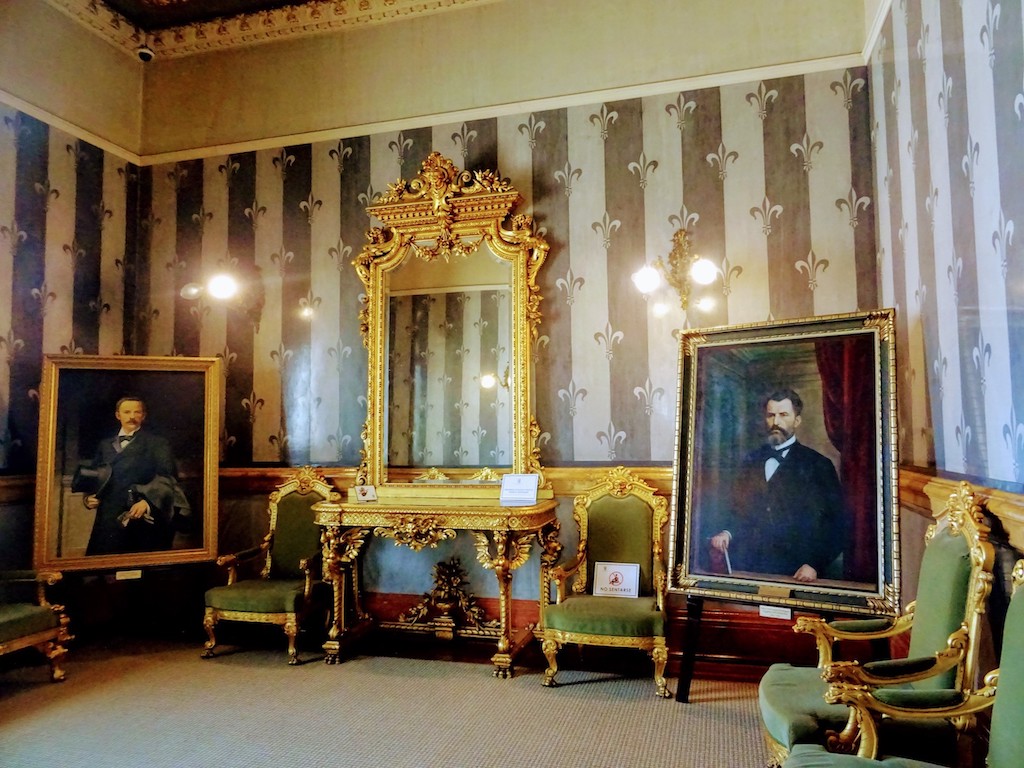

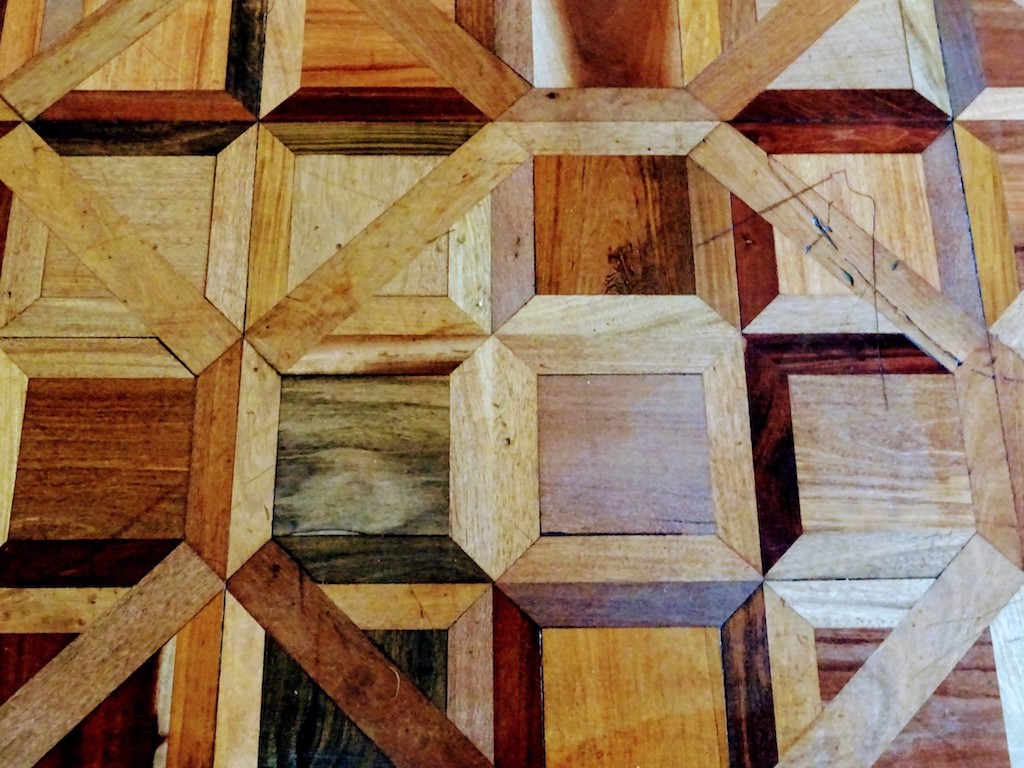

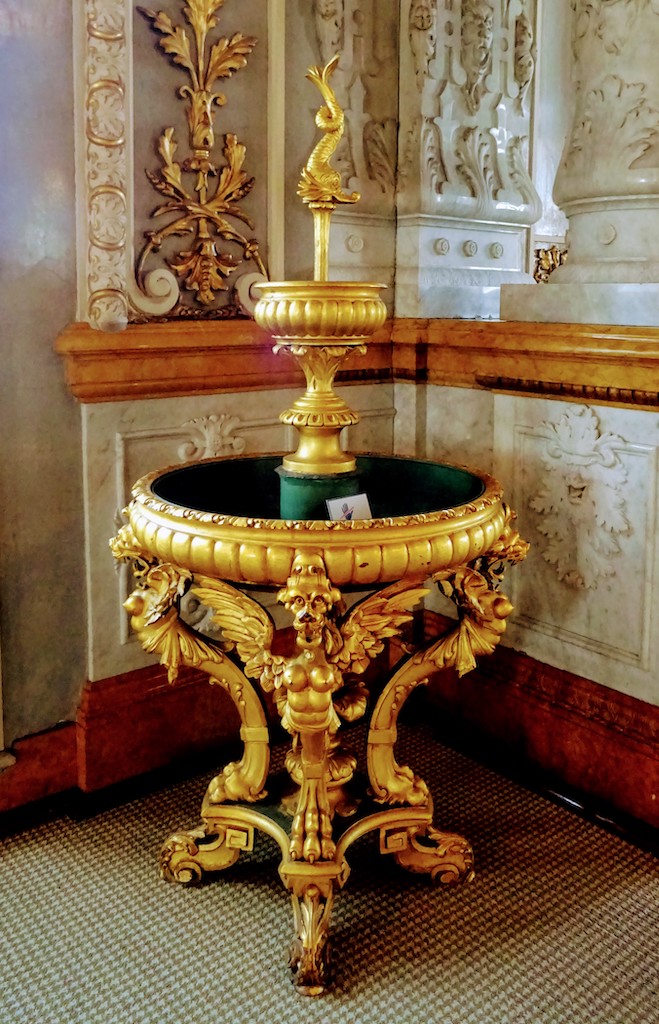

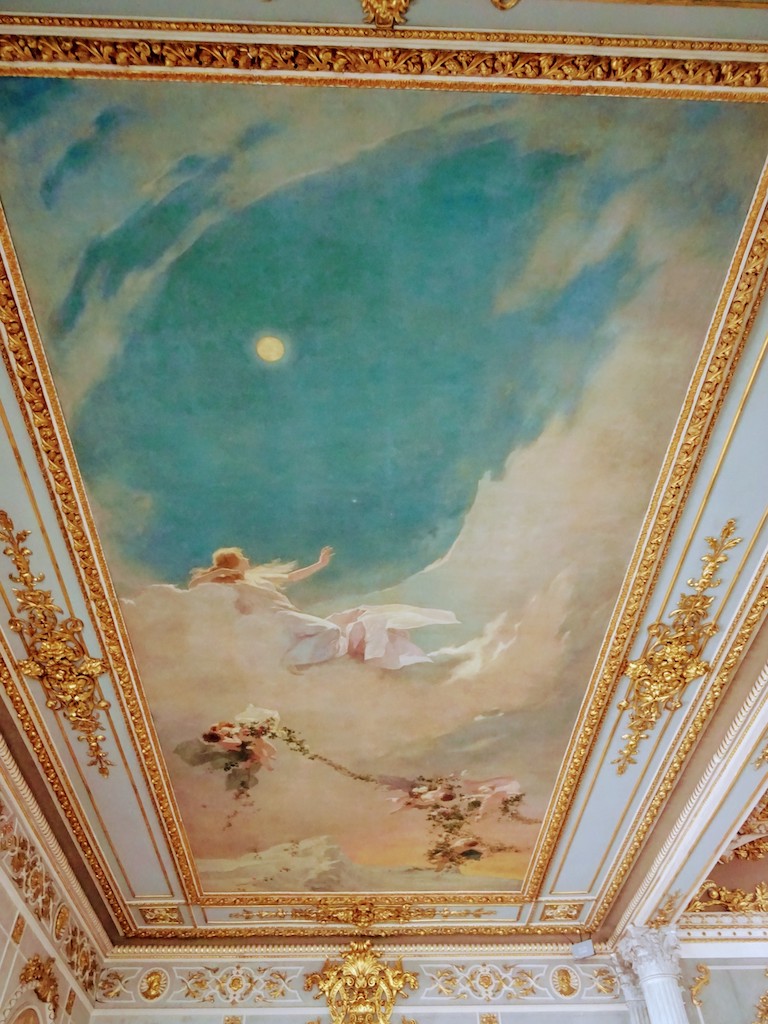

We stroll again to admire the details of the decorations, and our tour ends. Unfortunately, we won’t end up in the small café of the theatre with pastries all more tempting than the other.
To conclude
This theater is really beautiful, the organized tours are really interesting and it is definitely a place to visit during your stay in San Jose.

What a gorgeous building! The architecture really is incredible. I didn’t get to spend much time in San Jose while I was in Costa Rica. Looks like a fun tour in the city.
Yes we really enjoy the tour. What we learned with the guide made us appreciate the city even more.
Quite a stunning building. It lacks a bit of practicality but it’s got style and I guess that was the plan. A bit like some stage shows.
Yes, they really nailed the “show off style” on the building. And it works well!